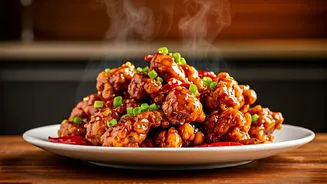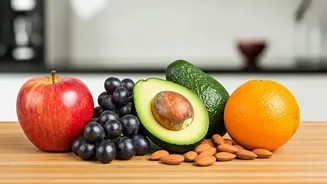The Great Misconception
Many dishes, widely recognized and enjoyed as Chinese cuisine, have roots that extend far beyond China's borders. The perception of what constitutes 'Chinese
food' often encompasses a broader culinary spectrum. However, some of the most popular dishes are, in fact, products of cultural exchange, adaptation, and even invention, drawing influences from various regions. These culinary creations have been adapted to local tastes and ingredients, evolving over time to become beloved staples in many countries, thus blurring the lines of their true origins. Understanding the story of these dishes gives a whole new depth and appreciation for the multicultural development of cooking.
Chop Suey's Tale
Chop Suey, a mixed-vegetable and meat dish often served with a thick sauce, is a prime example of culinary evolution. While the dish is popularly associated with Chinese restaurants globally, its creation is attributed to Chinese immigrants in the United States during the late 19th century. Stories suggest that it was invented to cater to American palates, blending available ingredients and techniques. The dish is not widely found in China, indicating its primarily American heritage. Over time, Chop Suey has been localized, with many variations. This adaptability highlights how foods shift as they're brought to different countries, making them uniquely their own.
Fortune Cookie Secrets
The ubiquitous fortune cookie, a sweet treat containing a small slip of paper with a proverb or prediction, is almost exclusively a North American invention, despite its association with Chinese restaurants. There is no historical evidence of fortune cookies being a Chinese tradition. There are disputes over who exactly invented them, with some theories pointing to Japanese or Chinese-American origins. The cookies are not common in China, solidifying their status as a cultural export from America, rather than an import. Their presence in Chinese restaurants is a nod to how globalization has shaped food, and how tastes shift across cultures.
Egg Foo Young's Origins
Egg Foo Young, an omelet dish filled with meat and vegetables, is a staple at many Chinese restaurants globally. While its origins are debated, it's generally accepted that the dish evolved significantly outside of China, specifically in Southeast Asia and the United States. Its evolution shows how dishes can evolve through cultural exchange. Different regions offer their spin on the recipes, using local ingredients to make the dish their own. Although there are variations in China, they do not align with the global perception of Egg Foo Young. This demonstrates how food adapts, transforming into distinct regional variants.
General Tso's Story
General Tso's Chicken, the sweet and savory fried chicken dish, is another dish that has its origins in the United States, despite being named after a Chinese general. The dish was supposedly created by a chef in Taiwan during the 1950s or 1960s, and then popularized in the United States by a chef named Peng Chang-kuei, who adapted and refined the recipe. The dish doesn't exist in traditional Chinese cuisine, further highlighting its evolution as a product of cross-cultural influence. The adoption and adaptation of the dish showcase how restaurants can bridge cultural divides through food.
The Real Story
The history of these dishes reveals a fascinating story of culinary innovation and the global exchange of flavors. They have been shaped by immigration, local ingredients, and the desire to please different palates. Although they are widely recognized as Chinese food, their origins and development tell of broader cultural connections. Recognizing the true stories behind these dishes enriches the dining experience, showcasing how food can build bridges and represent diverse cultural stories.
















